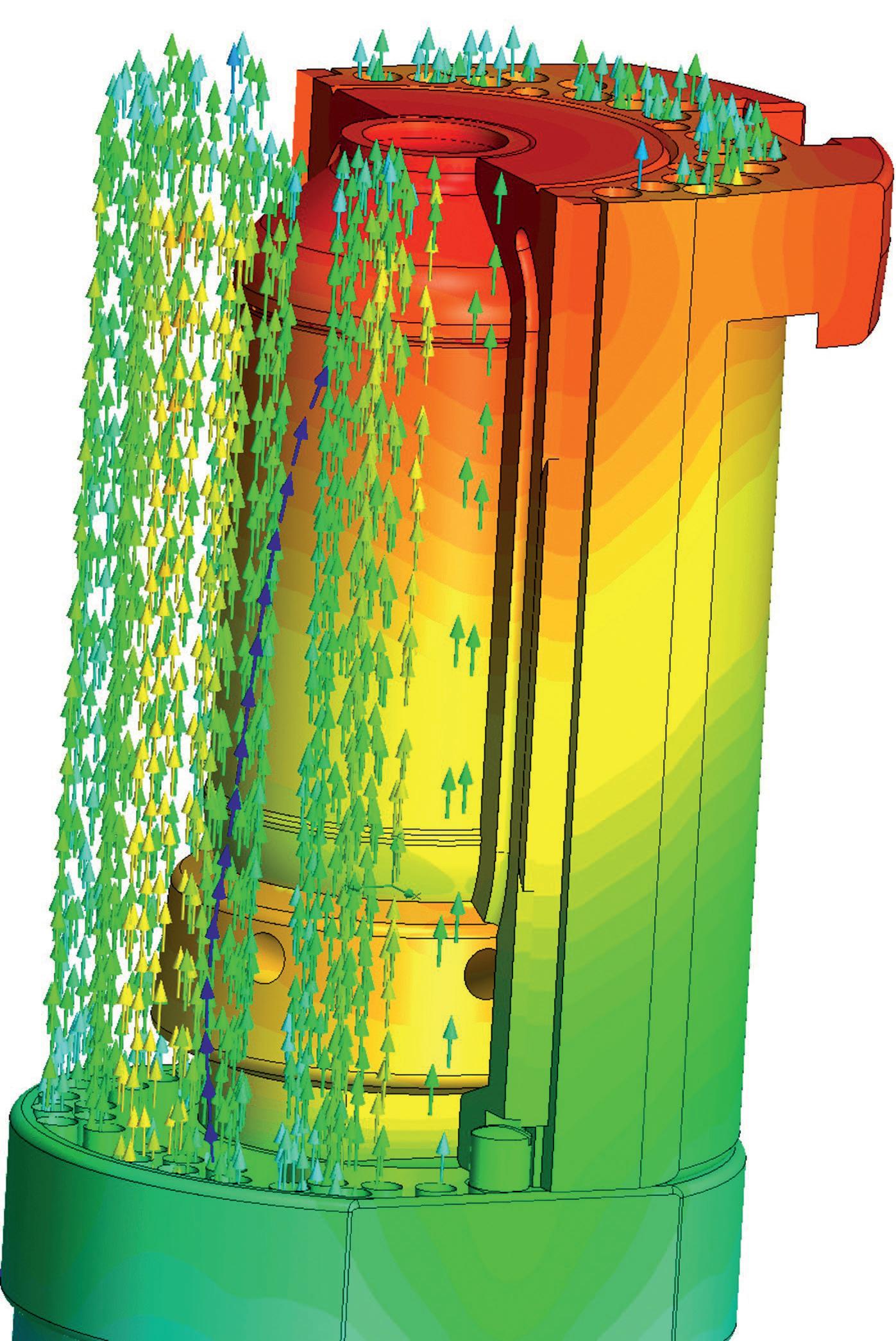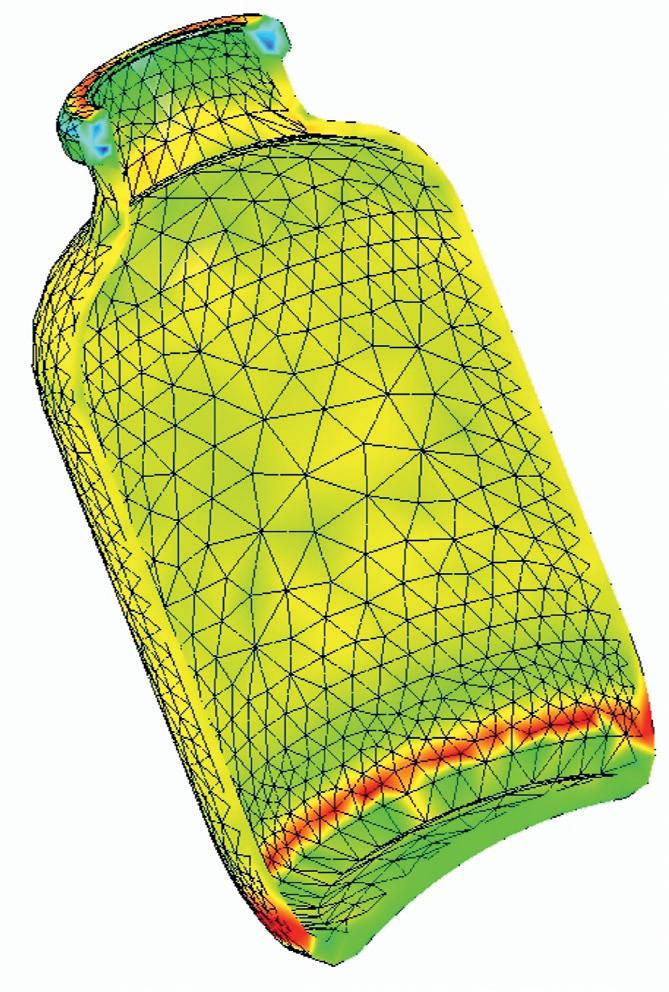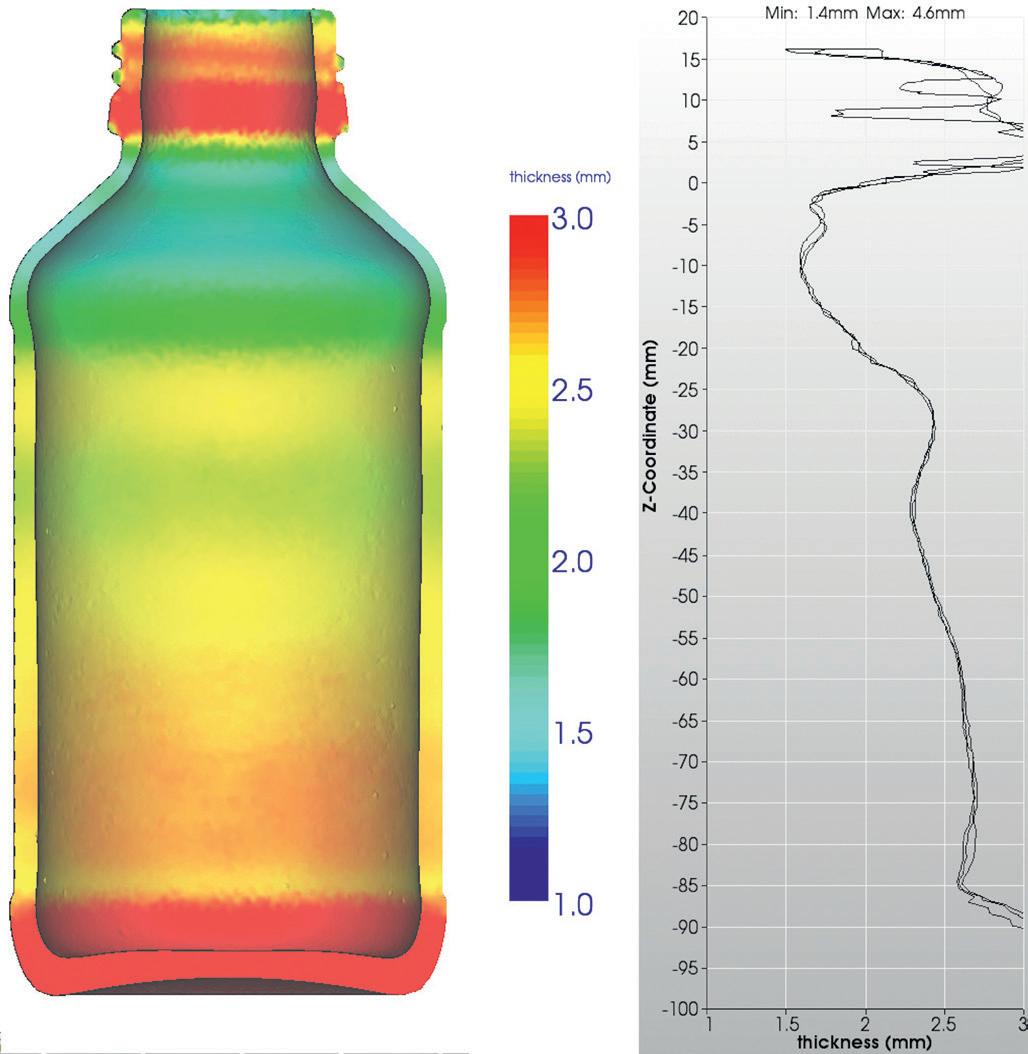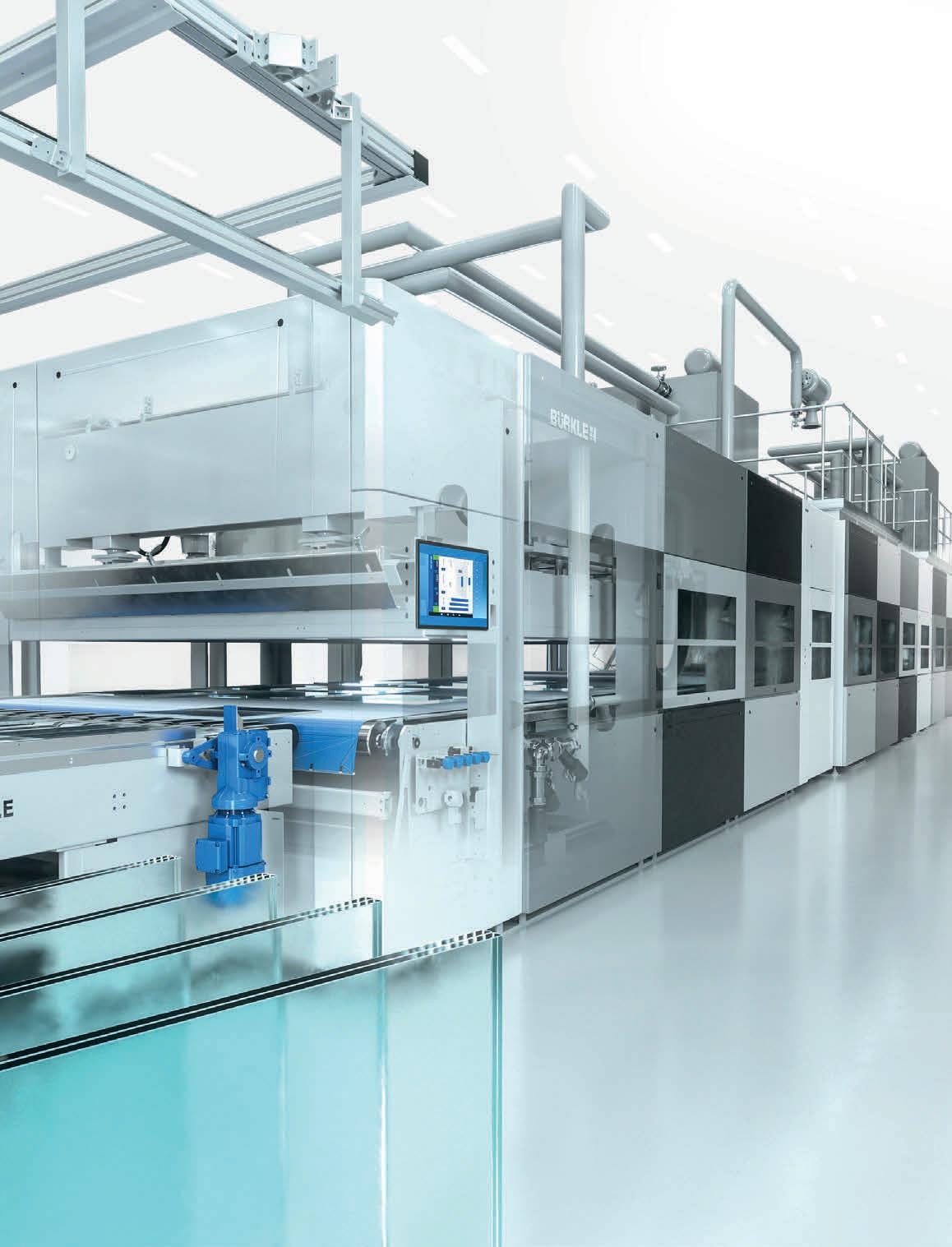
3 minute read
Moulds: Gerresheimer
Digital simulation of the glass moulding process
Philipp Amrhein* discusses how the digital design of the glass mould is contributing towards Gerresheimer’s sustainability aims.
Gerresheimer has set itself the goal of applying sustainability criteria to 100% of new product developments by 2023.
For example, glass simulation helps to achieve perfect, uniform glass distribution. It can improve strength and contribute to weight reduction and the avoidance of rejects. Simulation software used by Gerresheimer for this purpose tunes the production parameters based on CFD (Computational Fluid Dynamics or numerical flow mechanics). In this way, potential for improvement can be identified at an early stage and the development time can be shortened.
“The production of the glass container starts with the design of the mould. The more precisely the mould is designed and manufactured, the better its quality in terms of glass distribution, visual appearance, strength and weight,” says Philipp Amrhein, Manager New Product Development & Mould Design at Gerresheimer in Lohr, Germany.
The weight of bottles, flacons, and jars in particular plays an important role in energy consumption and therefore in both production and transport logistics. Considering all chemical and physical glass parameters, the moulding production process and the design of the moulds are optimised with the aid of digital simulation on the computer. The mould cooling is also optimally designed for the respective process by means of CFD simulation. This leads to stress reductions in the glass container and thus to an effectively improved quality of the entire production process, for example by avoiding high scrap rates.
Reduction of development time
What used to take lengthy empirical trials to achieve a stable production process is now done in a matter of minutes, at the push of a button so to speak, using computer-based simulation software. Subsequently, the results are transferred via interfaces directly to the three-dimensional CAD software of the mould design department, and the mould processing -machines use them directly to create the mould tools. It is also gratifying that the simulation software reduces development time by up to 70%.
Continued>>


� Result of the process simulation - analysis of the glass wall thickness distribution.
Rapid detection of vulnerabilities
Based on the well-known finite element analysis (FEA), the stresses resulting from the product requirements are calculated on the glass containers. Based on these results, weak points can be avoided even before the finished article drawings of the product. In the meantime, computeraided simulation of the moulding process and product requirements has become an indispensable part of daily mould design and our continuous improvement process.
Environmental aspects
The global volume of packaging is constantly increasing and with it the negative impact on the environment. The transition to a circular economy is an important concern for us. We want to improve the environmental impact of our products throughout their entire life cycle - including production, transport, use and disposal. In many cases, the packaging solution is an integral part of the system, without which some medications would not be as user-friendly and safe. In this way, we lay the foundation for a sustainable product right from the development process and aim to ensure that the environmental impact is considered from the outset. �
Gerresheimer, Lohr, Germany www.gerresheimer.com
Autoclave-free Lamination System for Flat Glass Production
Energy- and cost-efficient inline production of laminated glass
• Fast lamination due to contact heat transfer under vacuum
• No Pre-Nip, No Vacuum bagging or rack preparation necessary • Low energy and manufacturing costs compared to autoclaves • Short cycle times of 5 to 20 minutes depending on the glass build-up
Engineering is our DNA
burkle.tech











